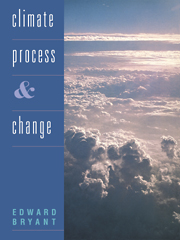10 - Epilogue
Published online by Cambridge University Press: 05 June 2012
Summary
RELATIVE IMPORTANCE OF CHANGES IN ATMOSPHERIC RADIATIVE FORCING
(MacCracken, 1983; Harrison et al, 1993; Charlson and Heintzenberg, 1994; Jones, 1994; Houghton et al, 1995)
Cooling from anthropogenic aerosols, mainly due to industrial activity, but also including natural components, is changing the heat and energy balance of the atmosphere. The balance in radiation is being shifted between night and day, winter and summer, land and oceans, the tropics and mid-latitudes, the northern and southern hemisphere, and finally between the Earth's surface and the upper atmosphere. The impact of humans upon climate change cannot be attributed to a single factor weighted towards warming or cooling. It includes many factors operating with varying magnitudes, at different temporal and spatial scales. For instance, globally enhanced ‘greenhouse’ warming is being shielded regionally by the effects of industrial sulphates, and exacerbated by urban heat islands. There may also be undefined impacts that science has neither measured nor thought about. For example, humans may be enhancing dimethylsulphide production by phytoplankton in the oceans, through the overuse of agricultural fertilisers, and by discharging more iron in urban runoff and industrial effluent.
Human-induced climate change is occurring against a background of natural change. Anthropogenic radiative forcing and the inherent variability in natural fluxes of energy in the atmosphere are summarised in Table 10.1, and displayed in Figure 10.1. Values are based on references already quoted or listed in this text.
- Type
- Chapter
- Information
- Climate Process and Change , pp. 199 - 203Publisher: Cambridge University PressPrint publication year: 1997



